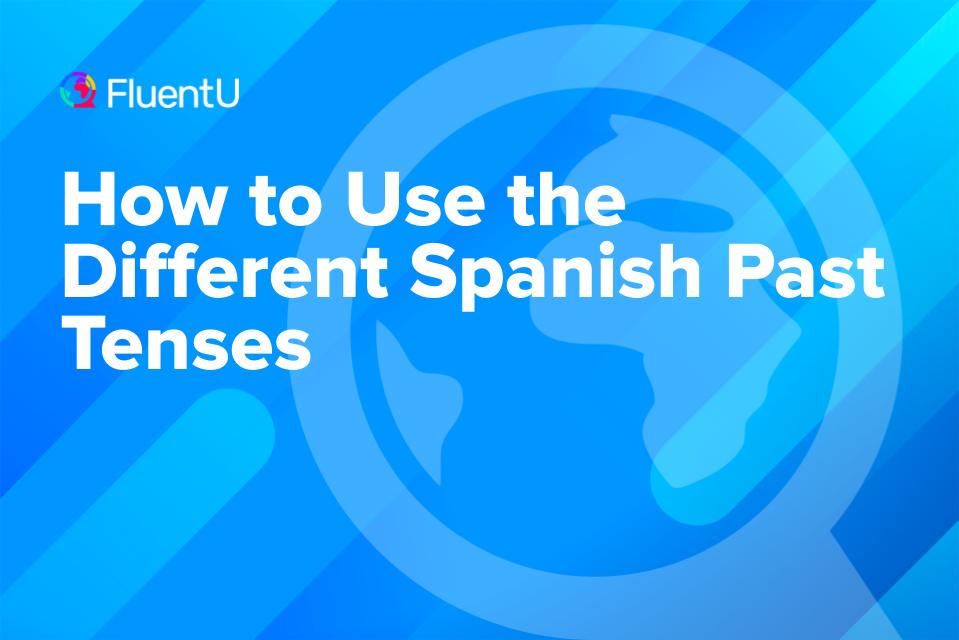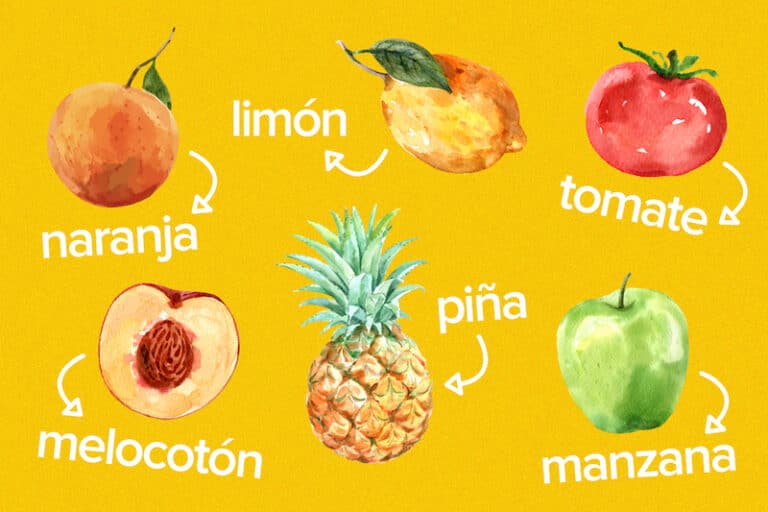How to Use the Different Spanish Past Tenses

There are five past tenses in Spanish—the preterite, past imperfect, past progressive, present perfect and past perfect. They each express different things and so should be used in different contexts.
Download: This blog post is available as a convenient and portable PDF that you can take anywhere. Click here to get a copy. (Download)
What Are the Spanish Past Tenses?
There are five Spanish past tenses that are used in different situations. These tenses are the preterite, imperfect, past progressive, present perfect and past perfect.
| Past Tense | Usage |
|---|---|
| Preterite | Actions that happened at a specific point in the past |
| Past Imperfect | Actions that were ongoing in the past |
| Past Progressive | Progressive actions that ended |
| Present Perfect | Actions that started in the past but are still happening in the present |
| Past Perfect | Actions that took place before another action |
You will most often use the preterite and imperfect past tenses while the other three are less common, but still good to know.
Now, let’s have a look at them in more detail!
1. Preterite (Préterito indefinido)
| Pronoun | -AR Ending | -ER/IR Ending |
|---|---|---|
| Yo | -é | -í |
| Tú | -aste | -iste |
| Él/Ella/Usted | -ó | -ió |
| Nosotros | -amos | -imos |
| Vosotros | -asteis | -isteis |
| Ellos/Ellas/Ustedes | -aron | -ieron |
The preterite past tense defines actions that have already been accomplished or tasks that have been completed.
It refers to something that happened one time only—a single experience rather than an ongoing event.
The conjugation for preterite is rather simple as you simply take the stem and add the correct ending.
Here are some examples:
Compré zapatos rojos. (I bought red shoes.)
Comiste frijoles rojos y arroz. (You ate red beans and rice.)
Asistió al juego de pelota. (He/she attended the ball game.)
Read more on this tense here:
Preterite vs Imperfect in Spanish | FluentU Spanish Blog
The preterite vs imperfect in Spanish is likely one of your first biggest learning obstacles. They’re both used to talk about the past—but only under certain conditions!…
2. Past Imperfect (Pretérito imperfecto)
| Pronoun | -AR Ending | -ER/-IR Ending |
|---|---|---|
| Yo | -aba | -ía |
| Tú | -abas | -ías |
| Él/Ella/Usted | -aba | -ía |
| Nosotros | -ábamos | -íamos |
| Vosotros | -abais | -íais |
| Ellos/Ellas/Ustedes | -aban | -ían |
The imperfect past tense can refer to a few situations including references to an action without a specified ending, something that was true in the past but not anymore or habits and repeated events.
Because it talks about repeated habits or events, it’s often translated as “used to.”
This conjugation is also pretty simple, just adding the proper endings depending on which kind of verb it is.
Amábamos a mi gato. (We loved my cat.)
Comían plátanos. (They ate plantains.)
Abría a las ocho. (It used to open at eight.)
Read more on this tense here:
The Imperfect Tense in Spanish: How to Use It with Confidence | FluentU Spanish Blog
The imperfect tense in Spanish is used to talk about past habitual actions, describe the past, give times and dates and more. Read this post to learn how to form the…
3. Past Progressive (Imperfecto progresivo)
| Pronoun | Estar + Gerund |
|---|---|
| Yo | Estaba + gerund |
| Tú | Estabas + gerund |
| Él/Ella/Usted | Estaba + gerund |
| Nosotros | Estábamos + gerund |
| Vosotros | Estabais + gerund |
| Ellos/Ellas/Ustedes | Estaban + gerund |
The past progressive tense is used to convey information about a progressive action that has already ended.
In other words, this tense talks about someone who was doing something but isn’t anymore. Or an action that was happening, but isn’t anymore.
It’s a compound tense, which means that you need two verbs to form it. The main verb is combined with an auxiliary verb, which in this particular case is estar (to be).
The estar will be in its imperfect form, and the main verb will be put into gerund form.
Estabas bailando con mi abuelo. (You were dancing with my grandpa.)
Estaba estudiando en España. (She was studying in Spain.)
Estábamos trabajando en el restaurante. (We were working at the restaurant.)
Read more on this tense here:
How to Use the Past Progressive in Spanish | FluentU Spanish Blog
The past progressive in Spanish can help make your sentences sound a whole lot more interesting. So what is the Spanish past progressive, how do you form it, when do you…
4. Present Perfect (Pretérito perfecto compuesto)
| Pronoun | Haber + Participle |
|---|---|
| Yo | He + participle |
| Tú | Has + participle |
| Él/Ella/Usted | Ha + participle |
| Nosotros | Hemos + participle |
| Vosotros | Habéis + participle |
| Ellos/Ellas/Ustedes | Han + participle |
The present perfect tense is also referred to as el pretérito perfecto and el perfecto compuesto.
Like the past progressive tense, the present perfect is also a compound tense.
The present perfect tense is often used for actions that still take place, have happened recently, or an action or activity that has happened a set number of times.
To form the present perfect tense, you will take the present conjugation of haber and add the past participle of the main verb.
He jugado fútbol. (I have played soccer.)
Ha bebido cerveza. (He has drunk beer.)
Han vivido sin sus padres. (They have lived without their parents.)
Read more on this tense here:
How to Use the Present Perfect in Spanish | FluentU Spanish Blog
The present perfect in Spanish is used to talk about things that happened in the past—but still affect the present. Click here to learn everything you need to know about…
5. Past Perfect (Pluscuamperfecto)
| Pronoun | Haber + participle |
|---|---|
| Yo | Había + participle |
| Tú | Habías + participle |
| Él/Ella/Usted | Había + participle |
| Nosotros | Habíamos + participle |
| Vosotros | Habíais + participle |
| Ellos/Ellas/Ustedes | Habían + participle |
The past perfect tense describes what someone had done prior to another event that happened in the past.
For example, something happened prior to someone’s arrival at an event or someone had a cup of coffee before going for a walk.
This conjugation requires haber in its imperfect form and the past participle of the main verb.
Ya había bailado antes de la cena. (I had already danced before dinner.)
Ella había comido antes de subir al tren. (She had eaten before getting on the train.)
Ellos habían dormido antes de la fiesta. (They had slept before the party.)
Read more on this tense here:
How to Use the Pluscuamperfecto | FluentU Spanish Blog
The pluscuamperfecto or pluperfect Spanish tense might seem scary, but it’s really not! Study this Spanish tense and learn its conjugations to talk about actions that…
Spanish Past Tense Practice Quiz
Conjugate the verbs in parentheses according to the correct past tense, then check your answers below.
1. Ayer yo (comer) pizza a las 3 de la tarde. (Yesterday I ate pizza at 3 o’clock in the afternoon.)
2. Ella (caminar) a la escuela todos los días cuando era pequeña. (She walked to school every day when she was little.)
3. Mi abuela me (contar) cuentos sobre nuestra familia cuando (vivir) con ella. (My grandmother told me stories about our family when I lived with her.)
4. Mi hermana (cumplir) 20 años ayer. (My sister turned 20 years old yesterday.)
5. Yo (estar, comer) cuando tú me (llamar). (I was eating when you called me.)
6. Tú ya (haber, llegar) cuando (salir) de mi casa. (You had already arrived when I left my house.)
7. ¿Ustedes ya (haber, cenar)? (Have you already eaten?)
8. Vosotros (estar, trabajar) por muchas horas. (You were working for hours.)
9. Yo (haber, beber) cuatro copas de vino. (I had drunk four glasses of wine.)
10. Nosotros (hablar) toda la noche. (We talked all night.)
Answer key:
1. comí
2. caminaba
3. contaba, vivía
4. cumplió
5. estaba comiendo, llamaste
6. habías llegado, salí
7. han cenado
8. estuvisteis trabajando
9. había bebido
10. hablamos
How to Practice the Spanish Past Tense
While this guide has covered the different Spanish tenses pretty extensively, it’s important that you spend some time using all of them in your review sessions.
Here are a few activities to help you with the Spanish past tenses:
- Write a story incorporating each past tense at least once
- Recount past events in a language journal
- Identify the different tenses in a Spanish news article
- Identify the different tenses in Spanish movies, music, etc.
Remember that listening and reading practice, whether you’re reviewing past tenses or another grammar element, is best done with native Spanish content.
There are tons of resources online where you can watch and listen to Spanish-language media. Streaming platforms like Netflix are excellent tools for learners because of the subtitle language options.
For authentic Spanish content beyond movies and TV shows, you can also check out the FluentU video library.
FluentU takes authentic videos—like music videos, movie trailers, news and inspiring talks—and turns them into personalized language learning lessons.
You can try FluentU for free for 2 weeks. Check out the website or download the iOS app or Android app.
P.S. If you decide to sign up now, you can take advantage of our current sale!

Before you know it, any fear you had about the Spanish past tenses will be where it belongs—in the past!
Have fun and good luck!
Download: This blog post is available as a convenient and portable PDF that you can take anywhere. Click here to get a copy. (Download)
And One More Thing…
If you've made it this far that means you probably enjoy learning Spanish with engaging material and will then love FluentU.
Other sites use scripted content. FluentU uses a natural approach that helps you ease into the Spanish language and culture over time. You’ll learn Spanish as it’s actually spoken by real people.
FluentU has a wide variety of videos, as you can see here:

FluentU brings native videos within reach with interactive transcripts. You can tap on any word to look it up instantly. Every definition has examples that have been written to help you understand how the word is used. If you see an interesting word you don’t know, you can add it to a vocab list.

Review a complete interactive transcript under the Dialogue tab, and find words and phrases listed under Vocab.

Learn all the vocabulary in any video with FluentU’s robust learning engine. Swipe left or right to see more examples of the word you’re on.

The best part is that FluentU keeps track of the vocabulary that you’re learning, and gives you extra practice with difficult words. It'll even remind you when it’s time to review what you’ve learned. Every learner has a truly personalized experience, even if they’re learning with the same video.
Start using the FluentU website on your computer or tablet or, better yet, download the FluentU app from the iTunes or Google Play store. Click here to take advantage of our current sale! (Expires at the end of this month.)







